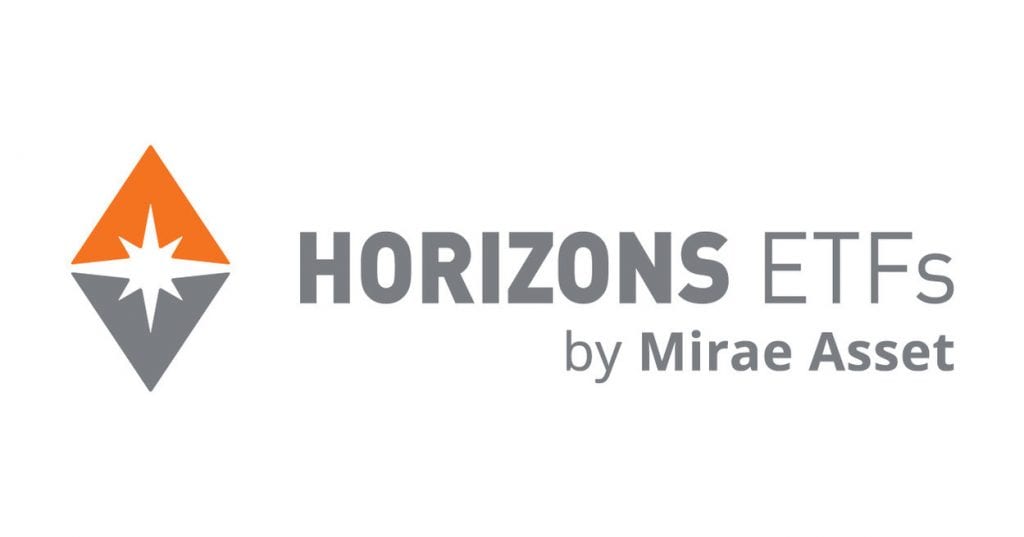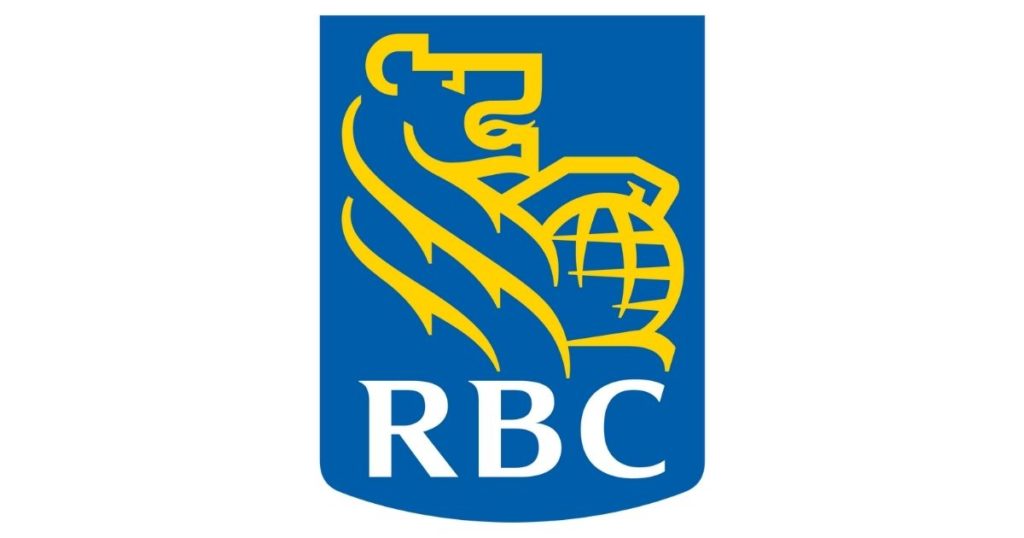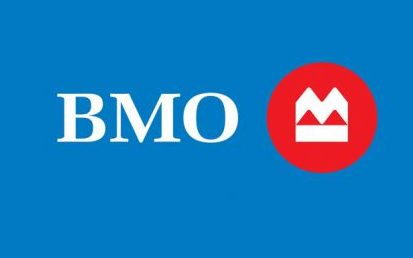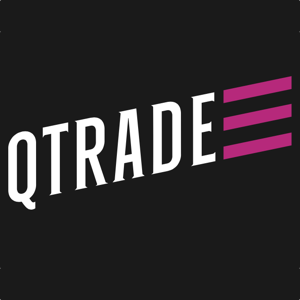If you’re looking to gain broad exposure to the banking sector without having to pick individual stocks, exchange-traded funds (ETFs) focused on Canadian banks offer an enticing option for you.
Canadian banks contribute roughly 3.8% of Canada’s GDP (Over $66 billion). Bank holdings are commonly found in most Canadian investors’ portfolios.
There also aren’t very many banks in Canada, so see below the list to get my take on whether or not it is even worth investing in bank ETFs.
I’ll cover the best Canadian bank ETFs in Canada and discuss their features.
How to Pick a Canadian Bank ETF
Before choosing to invest in a Canadian Bank ETF, make sure to take a look at several factors which may help you to single out a top fund choice for your portfolio:
- Investment Objective: Determine your investment goals. Are you looking for growth, income through dividends, or a mix of both?
- Management Expense Ratio (MER): This represents the total cost of the ETF’s operations as a percentage of its assets. A lower MER can mean fewer costs eating into your returns, but also consider the performance and other benefits the ETF might offer.
- Performance History: Review the historical performance of the ETF. While past performance is no guarantee of future returns, it can provide insights into the ETF’s consistency and management quality.
- Dividend Yield: If you’re an income-focused investor, you might prioritize ETFs with a higher dividend yield. But remember to ensure that the yield is sustainable and backed by the underlying bank’s profits.
- Liquidity: Ensure the ETF has a decent trading volume. Higher liquidity typically means narrower bid-ask spreads, allowing for better buy and sell prices.
- Strategies: Certain ETFs will have specific tactics such as covered calls, which enhance income by selling call options on underlying holdings, or mean reversion, which capitalizes on price deviations by betting that assets will return to their average price. Make sure the ETF strategies align with your investment goals.
Best Canadian Bank ETFs
- Horizons Equal Weight Canadian Banks ETF (HEWB.TO)
- RBC Canadian Bank Yield Index ETF (RBNK.TO)
- BMO Equal Weight Banks Index ETF (ZEB.TO)
- Hamilton Canadian Bank Mean Reversion Index ETF (HCA.TO)
- BMO Covered Call Canadian Banks ETF (ZWB.TO)
- CI Canadian Banks Covered Call Income Class ETF (CIC.TO)
- Evolve Canadian Banks and Lifecos Enhanced Yield Index Fund (BANK.TO)
1. Horizons Equal Weight Canadian Banks ETF

- Ticker: HEWB.TO
- Inception Date: January 22, 2019
- Assets under Management: $139.21 Million
- Management Expense Ratio: 0.30%
- Management Style: Passive
- Risk Rating: Medium
- Distributions: None
- Distribution Yield: N/A
- Number of Holdings: 6
- Stock Price: $29.97
- YTD Return: -1.85%
One of the lowest-cost Canadian bank ETFs in Canada is offered by Horizons. HEWB is an equal-weight passive strategy that tracks the Solactive Equal Weight Canada Banks Index (Total Return). It divides your investment equally among the six major Canadian banks.
HEWB has a short performance track record and is a fairly large ETF by assets under management. Relative to other Canadian bank ETFs, HEWB is offered at a considerably lower MER.
As part of the total return ETF offering from Horizons, HEWB aims to be as tax efficient as possible by reducing taxable distributions as much as possible. This is especially useful for investors looking to add Canadian bank exposure to a non-registered account.
Horizons has assigned a medium risk rating to HEWB, which is a fair assessment of volatility.
Since the ETF does not pay a dividend, it may not be attractive for investors looking for an income stream. This is especially important since Canadian banks have maintained a high dividend yield over time and are usually considered an attractive investment due to their income streams.
If you are not concerned with income and are investing in a non-registered account, HEWB is an excellent choice as a Canadian bank ETF.
2. RBC Canadian Bank Yield Index ETF

- Ticker: RBNK.TO
- Inception Date: October 2017
- Assets under Management: $259.3 Million
- Management Expense Ratio: 0.32%
- Management Style: Passive
- Risk Rating: Medium to High
- Distributions: Monthly
- Distribution Yield: 4.81%
- Number of Holdings: 6
- Stock Price: $22.97
- YTD Return: -2.37%
Another low-cost Canadian bank ETF is offered by RBC. The allocation to each of the six Canadian banks is determined in order to increase yield and potential returns.
RBNK is a passive strategy that tracks the Solactive Canada Bank Yield Index.
The ETF has a medium-length performance track record and is a large ETF by assets under management. When compared to other Canadian bank ETFs, RBNK is fairly inexpensive with regard to its MER.
RBNK pays distributions to investors on a monthly basis. It pays a great dividend yield which will be very attractive for investors that are looking for a constant income stream.
RBC has assigned a medium to high-risk rating to RBNK, which likely overstates the riskiness of the strategy. Mature businesses like the major Canadian banks are considered blue chip companies and are generally considered a medium risk at most major brokerages.
If you are looking for something beyond an equal-split investment between Canadian banks, RBC’s RBNK is a great option to consider.
3. BMO Equal Weight Banks Index ETF

- Ticker: ZEB.TO
- Inception Date: October 20, 2009
- Assets under Management: $3.44 Billion
- Management Expense Ratio: 0.28%
- Management Style: Passive
- Risk Rating: Medium
- Distributions: Monthly
- Distribution Yield: 4.75%
- Number of Holdings: 6
- Stock Price: $33.94
- YTD Return: -1.84%
The lowest-cost option for a Canadian bank ETF is offered by BMO. BMO’s ZEB ETF takes an equal-weight approach to investing in the six Canadian banks.
ZEB is a passive strategy that tracks the Solactive Equal Weight Canada Banks Index. The ETF has a long performance track record and is a massive ETF by assets under management.
When compared to other Canadian bank ETFs, ZEB’s MER is currently the lowest. Keep in mind that the ETF is also one of the most “plain vanilla” options on our list, essentially splitting up your investment equally among the major Canadian banks.
ZEB pays distributions to investors on a monthly basis. It pays an excellent dividend yield which is again attractive for income-oriented investors.
BMO has assigned a medium risk rating to ZEB, which is a fair assessment of volatility.
If you are looking for a simple Canadian bank ETF that automatically rebalances to equal weights over time, ZEB is a fantastic option to consider with great features.
4. Hamilton Canadian Bank Mean Reversion Index ETF

- Ticker: HCA.TO
- Inception Date: June 26, 2020
- Assets under Management: $77.59 Million
- Management Expense Ratio: 0.56%
- Management Style: Passive
- Risk Rating: Medium
- Distributions: Monthly
- Distribution Yield: 8.99%
- Number of Holdings: 6
- Stock Price: $20.32
- YTD Return: -1.94%
Hamilton ETFs offers an interesting Canadian bank strategy. HCA uses a mean reversion approach, meaning that it assumes all of the Canadian banks will perform in a similar fashion over time.
The ETF invests more in specific banks that are underperforming and less in those that are outperforming (in the short term).
Despite the strategy (which is actually of the underlying index), HCA is considered a passive ETF that tracks the Solactive Canadian Bank Mean Reversion Index TR.
Given the more complex approach to investing in Canadian banks, HCA comes with a relatively higher MER. The ETF has a short track record and is large in terms of assets under management.
Hamilton ETFs’ website references several studies that show a mean reversion strategy outperforming both an equal-weight and covered-call approach to investing in Canadian banks.
Since HCA’s performance record is short, investors will have to wait to see if the outperformance can actually be realized.
The ETF pays distributions on a monthly basis and has an excellent yield. Despite the higher fees, HCA is a well-rounded option to consider for your portfolio.
5. BMO Covered Call Canadian Banks ETF

- Ticker: ZWB.TO
- Inception Date: January 28, 2011
- Assets under Management: $2.4 Billion
- Management Expense Ratio: 0.72%
- Management Style: Active
- Risk Rating: Medium
- Distributions: Monthly
- Distribution Yield: 7.62%
- Number of Holdings: 6
- Stock Price: $17.19
- YTD Return: -1.34%
BMO offers a different approach to investing in Canadian banks by implementing a covered call strategy within their ZWB ETF. Covered calls involve selling call options to increase income over time. The ETF is actively managed.
The ETF has a long performance track record and is massive in terms of AUM.
When compared to the other Canadian bank ETFs on our list, ZWB has a relatively higher MER. This is due to the additional expertise and management involved with the active covered call strategy.
ZWB pays distributions to investors on a monthly basis. It pays an excellent dividend yield which is fantastic for investors that are looking for high cash flows.
BMO has assigned a medium risk rating to ZWB, which is a fair assessment of volatility. A covered call strategy can actually help to smooth volatility over time.
If you are looking to invest in Canadian banks while maximizing the yield that you are getting from your ETF, ZWB is a great option.
6. CI Canadian Banks Covered Call Income Class ETF

- Ticker: CIC.TO
- Inception Date: August 18, 2010
- Assets under Management: $187.59 Million
- Management Expense Ratio: 0.80%
- Management Style: Active
- Risk Rating: Medium
- Distributions: Quarterly
- Distribution Yield: 7.36%
- Number of Holdings: 6
- Stock Price: $10.39
- YTD Return: -1.57%
CI also offered a covered call strategy that focuses exclusively on Canadian banks here in Canada. CIC is actively managed, and the covered calls help to improve the fund’s income over time.
The ETF has a long performance track record and is fairly large in terms of assets under management.
When compared to the other Canadian bank ETFs on our list, CIC has a very high MER. This is again due to the additional expertise and management involved with the active covered call strategy.
CIC pays distributions to investors on a quarterly basis. It pays a great dividend yield which will be attractive for income-focused investors.
CI has assigned a medium risk rating to CIC, which is a fair assessment of volatility. The covered call strategy can help to somewhat reduce downside risk.
As a Canadian bank covered call strategy, CIC is another good option to consider.
7. Evolve Canadian Banks and Lifecos Enhanced Yield Index Fund

- Ticker: BANK.TO
- Inception Date: January 26, 2022
- Assets under Management: $97.35 Million
- Management Fee: 0.60%
- Management Style: Active
- Risk Rating: Medium to High
- Distributions: Monthly
- Distribution Yield: 13.62%
- Number of Holdings: 28
- Stock Price: $7.11
Evolve’s BANK ETF invests not only in the major Canadian banks but also in several life insurance companies as well. BANK aims to return a 1.25 times multiple of the performance of the Solactive Canadian Core Financials Equal Weight Index.
BANK uses leverage to obtain up to 125% exposure to Canadian core financial companies. The use of leverage increases the risk of most strategies considerably.
The ETF has a very short performance track record and is very small in terms of assets under management.
Since the fund’s inception date is so recent, it’s important to monitor it over time to observe performance and AUM growth. The fund’s size can put it at risk of closing down early if the ETF can’t attract additional capital in the future.
BANK has an above-average management fee, with an undetermined MER (since the strategy is so new). The MER will also factor in taxes.
BANK pays distributions on a monthly basis and currently pays an incredible yield of almost 11%.
Evolve has rated the ETF as medium to high risk, which is a fair assessment. The use of leverage increases risk, as we mentioned earlier.
If you are looking to maximize your income stream and take on additional risk, Evolve’s BANK ETF may be an excellent choice for your portfolio.
Comparative Analysis of Canadian Bank ETFs
When diving into the Canadian Bank ETF landscape, it’s crucial to understand and compare the different offerings in the market. Let’s delve into a comparative analysis:
| ETF Name | Ticker | Assets Under Management | Management Expense Ratio | Number of Holdings |
| Horizons Equal Weight Canadian Banks ETF | HEWB.TO | $120.03 Million | 0.30% | 6 |
| RBC Canadian Bank Yield Index ETF | RBNK.TO | $247.66 Million | 0.32% | 6 |
| BMO Equal Weight Banks Index ETF | ZEB.TO | $4.06 Billion | 0.28% | 6 |
| Hamilton Canadian Bank Mean Reversion Index ETF | HCA.TO | $83.48 Million | 0.56% | 6 |
| BMO Covered Call Canadian Banks ETF | ZWB.TO | $2.4 Billion | 0.72% | 6 |
| CI Canadian Banks Covered Call Income Class ETF | CIC.TO | $169.84 Million | 0.80% | 6 |
| Evolve Canadian Banks and Lifecos Enhanced Yield Index Fund | BANK.TO | $52.75 Million | 0.60% | 28 |
- Cost Efficiency: Among the ETFs listed, BMO Equal Weight Banks Index ETF (ZEB.TO) boasts the lowest Management Expense Ratio (MER), making it one of the most cost-effective options for investors.
- Innovative Strategies: Hamilton Canadian Bank Mean Reversion Index ETF stands out with its mean reversion strategy, betting on the convergence of bank performances over time.
- Yield and Distribution: For those investors seeking monthly income, the BMO Covered Call Canadian Banks ETF and the CI Canadian Banks Covered Call Income Class ETF both offer substantial yields.
- Diversification: Evolve’s BANK ETF provides a diversified approach, investing in both Canadian banks and life insurance companies.
- Management Style: Most of the ETFs employ a passive management style, tracking various indices. However, a few like the BMO Covered Call Canadian Banks ETF use an active approach, introducing a covered call strategy.
Pros and Cons of Investing in Canadian Bank ETFs
Canadian bank ETFs come with advantages and disadvantages.
- Diversifying across the Canadian banks
- The ability to access additional strategies such as covered calls
- Automatic rebalancing of your bank holdings over time according to the ETF’s strategy
- Management fees might not be worth the cost
- Canadian bank ETFs add limited value since there are not that many Canadian banks to begin with
- These ETFs come with a bid-ask spread and may be illiquid at times
- Less control over when bank holdings are bought or sold (versus buying the underlying stocks)
Should you Invest in a Canadian Bank ETF?
There are six major banks in Canada:
- National Bank of Canada
- Royal Bank
- Bank of Montreal
- Canadian Imperial Bank of Commerce
- Scotiabank
- Toronto Dominion Bank
Plain vanilla Canadian bank ETFs will be investing primarily across these six holdings while charging investors an MER for doing so.
Are Canadian Bank ETFs Worth the Fees?
As we mentioned earlier, there are only six major Canadian banks operating within Canada.
It is fairly easy to buy shares in each of the six banks and avoid paying ETF fees that would normally go to a fund company or investment manager.
Unless you have absolutely zero time to monitor your investments, it is likely a better idea to buy the six bank stocks directly and monitor them over time. This will save you from paying the ETF’s MER as well as give you more control over your investments.
Given these reasons, I don’t believe that Canadian Bank ETFs are worth the fees that they charge for most investors unless they have a special feature such as a covered call strategy.
FAQs
What are some top-performing Canadian bank ETFs?
Some top-performing Canadian bank ETFs include the BMO Equal Weight Banks Index ETF (ZEB.TO), RBC Canadian Bank Yield Index ETF (RBNK.TO), and the Horizons Equal Weight Canadian Banks ETF (HEWB.TO).
Which Canadian bank ETFs offer the highest dividends?
ETFs like the Evolve Canadian Banks and Lifecos Enhanced Yield Index Fund (BANK.TO) and BMO Covered Call Canadian Banks ETF (ZWB.TO) typically offer high dividends.
How to Buy the Best Canadian Bank ETFs in Canada
The cheapest way to buy ETFs is from discount brokers. My top choices in Canada are:

- 105 commission-free ETFs to buy and sell
- Excellent customer service
- Top-notch market research tools
- Easy-to-use and stable platform

- Stock and ETF buys and sells have $0 trading fees
- Desktop and mobile trading
- Reputable fintech company
- Fractional shares available
To learn more, check out my full breakdown of the best trading platforms in Canada.
Conclusion
If you are looking to invest in Canadian banks but don’t want to manage the six individual stock holdings yourself, a Canadian bank ETF is a great option to consider.
Canadian bank ETFs are fairly diverse, with varying strategies and benefits. Choose an ETF that matches your goals and circumstances.
When it comes down to making the ETF purchase(s), make sure to consider the different ways in which you can buy an ETF in Canada.






Just wanted to comment that ZEB’s MER hasn’t been updated on your blog in the square spot
thanks I’ve updated it now!